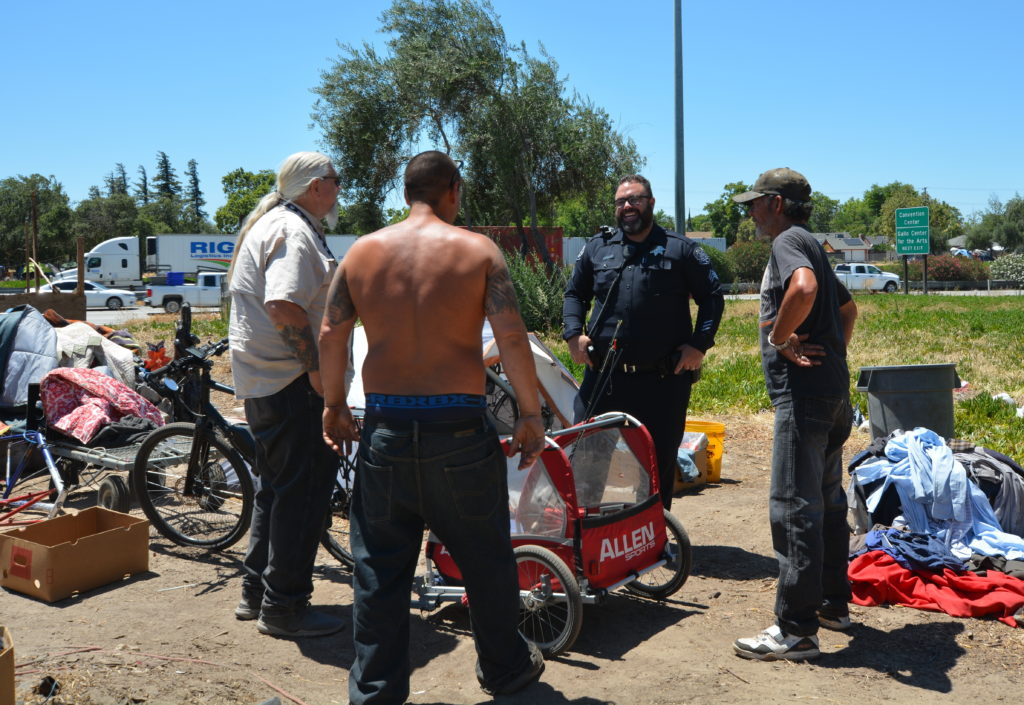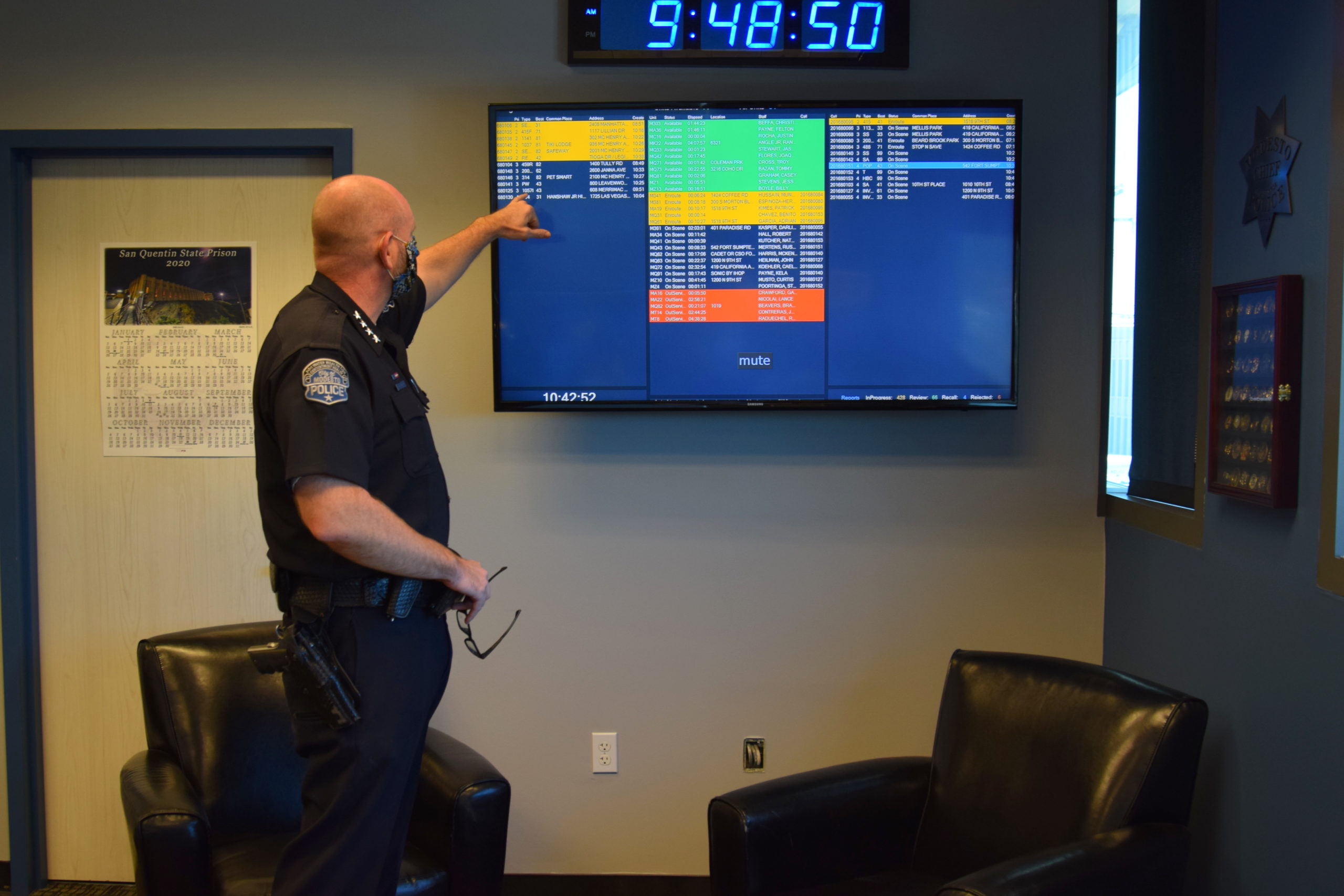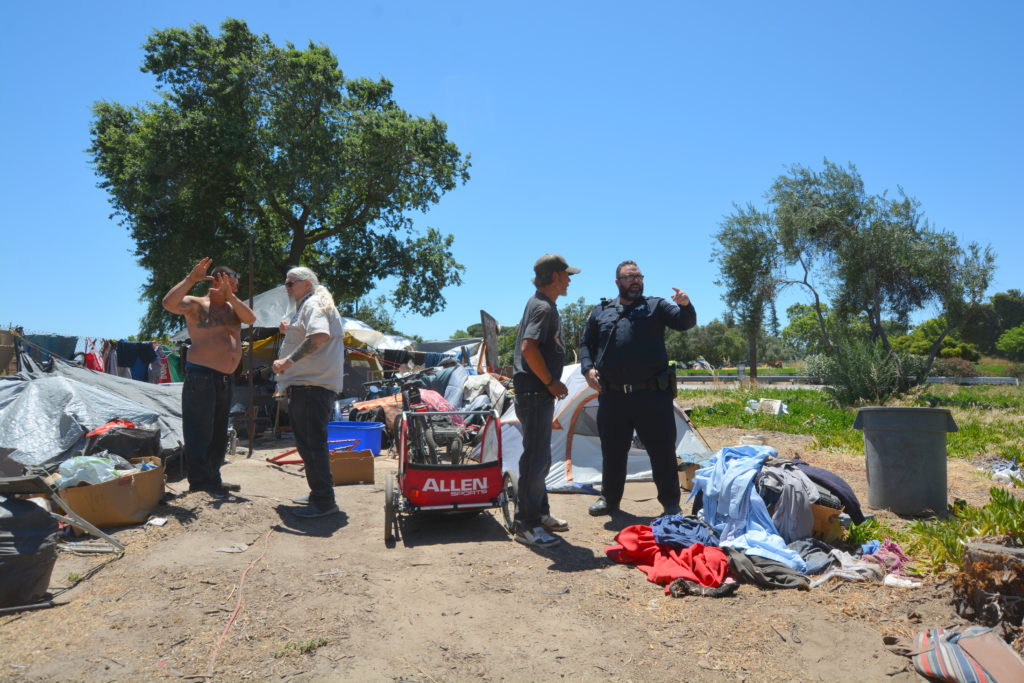Bernie Sanders, who understood underfunding of social services in America long before most other people, was incredulous when talk started about defunding police departments. Like most close observers, Sanders understands how law enforcement has changed over the years.

“I think we want to redefine what police departments do, [and] give them the support they need to make their jobs better defined. So I do believe that we need well-trained, well-educated, and well-paid professionals in police departments,” said Sanders recently.
He added that we need, “understanding that many police departments and cops deal every day with issues of mental illness, deal with issues of addiction, and all kinds of issues which should be dealt with by mental-health professionals or others, and not just by police officers.”
Sanders is undoubtedly aware that in many cities, police departments are already underfunded. That’s been the case in the City of Modesto since 2008, when the police department went from a total of 280 officers to 240 within the short space of a year.
“By 2013 or 2014,” said Modesto Police Chief Galen Carroll last Wednesday, “we were down to 209 or 210 officers. I remember during my job interview, a lot of the questions were about the budget. We’re still dealing with the budget; it’s no different than with your household budget. Maybe you would like a Cadillac, but all you can afford is a Volkswagen, so you drive a Volkswagen.”
Since then, Carroll said the department has been authorized to hire 22 more officers, but hasn’t had the money.
“And if I did have as much money as we need, I’m not sure all of it would go to more officers,” said Carroll, “but I’d certainly hire a lot more civilians.
Carroll agrees with Sanders that today’s cops deal with many problems better suited for social workers. And when he’s asked whether he thinks we have enough social workers, the answer is a flat, “No.”
Despite the drastic cuts in numbers, Carroll has been able to keep local crime numbers down through a combination of data analysis and technology. He places his officers where and when most likely needed based on predictive studies of where and when crime occurs.
“It doesn’t make sense to send a highly-trained and expensive officer out on a nuisance call,” said Carroll. “It’s like calling in a brain surgeon when you have a cold.”
Using three large screens mounted on a wall in his office, Carroll can see in real time all the calls for service throughout the city. Each screen displays calls according to the degree of urgency.
“Here’s one for a 370 in Enslen Park,” said Carroll. “That’s a homeless person in the park. There’s no real need for an officer to answer that call unless a crime is involved. Homelessness shouldn’t really be a police problem anyway.”
Modesto’s cop in charge of the homeless detail agrees. “We can use Community Service Officers and cadets for public nuisance calls,” said Sargent Mike Hammond Wednesday afternoon, after a long morning supervising 15 homeless outreach workers.
Hammond, who has won community awards from residents of Modesto’s high-crime west side, also supervises crimes associated with homelessness. He knows dozens of homeless people by name, and is widely respected for his tough but fair enforcement of the law.
“Hammond’s busted me before,” said one homeless man, “but I’ve always had it coming and he’s always treated me with respect.”
“I tell them it’s not personal, that I’ve got a job to do, and they understand that,” said Hammond

“One cop with a gun and several outreach workers is a good way to approach homelessness,” he added. “It makes a lot more sense to meet homeless people where they are and let them know what services are available and how to ask for help than to expect them to figure out where to go and when, especially when they don’t have transportation.”
It may be partly because he looks ready to suit up and play nose tackle for his beloved Chicago Bears that Hammond seldom has to deal with dangerous violence, but it’s also because he’s dedicated to proactive prevention rather than provoked punishment. Nonetheless, the severe shortage of officers still adds to each cop’s workload and stress, including his — factors that can diminish effectiveness on the job.
Carroll, who said he sometimes thinks, “I’m swimming in data,” has the numbers to prove a Modesto cop’s workload is well above average. Carroll’s charts show that even in 2008, when the city had many more cops, Modesto was in the top three for cases per full-time officer. But by 2013, among the 25 most populous cities in the state, Modesto led in crimes per officer even over high-crime cities like Oakland, Stockton, and Bakersfield.
What the data reveal, among other things, is that local cops are working harder and smarter than ever. The data also show that in many cities, defunding isn’t anything new, and it’s happened despite the promises and posturing of politicians looking to capitalize on hot button issues.
In some cities, though violent crime rates may have declined, violent crime clearance rates — concerning the crimes that get solved and cleared — have also declined. That means that even though there are fewer murders, there also fewer murderers getting caught and prosecuted.
There’s also been a widespread belief, long promoted by proponents of less government and lower taxes, that local governments are guilty of wasteful spending, including on law enforcement. In fact, countries in the European Union spend 33% more of gross domestic product on law enforcement than we do — but far less on prisons, suggesting the presence of more officers aids in the reduction of crime.
Chief Carroll agrees that the greater the police presence, the less crime, and he says that many calls for police officers could be more appropriately handled by other personnel, freeing police officers to deal with actual crimes and prevention by public presence.
“Why should the police be called when there’s a fist fight at school?” he said.
He also pointed out that on the East Coast, many cities average two to three cops per thousand residents, while on the West Coast the ratio is closer to one or one and a half officers per thousand. With fewer calls for the less-urgent cases, there could be an even greater police presence overall.
Part of the reason California can have a lower ratio of cops per citizen without far higher crime rates is extensive training that results in better policing. It can cost as much as $100,000 to properly train a local police officer, said Carroll, and then many seek work in the Bay Area, where the pay is higher.
“We prefer our officers to live here,” he said, “then they’re more invested in the community. But it’s hard to keep them; in 2015-16 we were bleeding officers to other cities like crazy.”
Sargent Hammond agrees that extensive training is a major factor in crime reduction. “We’re trained and retrained all the time,” he said. “We have to learn ethics, procedural justice, and de-escalation, among other things.”
For Hammond, de-escalation has become a favored tactic, one he’s well known for. Like most any cop, he sometimes has to deal with screaming people uttering gruesome threats while menacing with clenched fists, waving arms, and ready-to-hand objects.
“You’ve got to be able to tell whether you’re dealing with mental illness, drugs, a deep disturbance, or a truly dangerous person,” he said Wednesday, “Just because you can put your hands on a person doesn’t mean you have to. There’s usually a better way to deal with the situation.”
For Sargent Mike Hammond, finding, “a better way to deal with the situation,” has become a fundamental requirement in today’s art of enforcement — a necessary tool in the service of the law. It’s an essential tactic for any cop wishing to eradicate the stains of needless violence and wanton brutality that have too often made “justice for all” a cruel lie. Today’s cops have to be better. The best of them already are.



In the reform discussion, folks talk about police departments as if they are all the same. As with any business, some departments are run very well while others are mediocre at best.
When I looked at the Modesto department as a City Council Member, I found the department was run very well. Most telling was the relatively few citizen complaints.
When reviewing our department, we should avoid adopting one-size-fits-all policies and stick with what works best for us.. Having a great police chief is an important factor in which Modesto has been very lucky.
I value our Police Dept. and I assume the department is run well. But we all know what assume means, so I began to wonder the following:
1. Budget: PD gets the largest amount of the cities budget, over 70% with fire second at half the dollars.. Well below is Park & Rec.
2. Progress on crime prevention:: Both Nationally and State of California have seen a constant decline in crime. When reviewed on graphs the two mentioned lines are diagramed in a smooth decrease while the City of Modesto shows spikes and declines repeating up and down as recorded 2011 forward.
3. Private Law Enforcement: Not included under budgeted law enforcement figure for 2020/2021 proposed budget is the dollars paid to private law enforcement, previously or currently held by Rank. It would be helpful to know the total amount we as citizens are paying to be “protected.”
4. Per Capita: Because there is little money ,the last time I looked a few years ago Modesto was second from the bottom on amount spent per citizen.
So what is the problem? I do not doubt we have a tight budget. The Chief says he is under funded. Trees can not be tended to. Traffic enforcement is under represented,. When you hear proposals, all things other communities are doing, the answer is invariably ” there is no money” .
The Mayor campaigned and won on a “no spend agenda”. At the time I was hard pressed to see where excess spending was occurring unless it was poor management issues which I would say the city has been guilty of. But could we be under taxing ourselves to the point that the amenities that raises quality of life for all are getting left out.
I would hope with the fall out financially from the pandemic our elected and hired city decision makers would be thinking out of the box. To manage governance as “business as usual” any business would tell you is over..
We need forward thinking talented individuals to come forward for the good of the community. I am ready to see non partisan leadership within the community working together to make Modesto as smart and forward thinking as it once was.
Very nice analysis Denise. Let me emphasize the Chief did not say he needs more money; he acknowledged shortfalls in social workers and would likely agree with you on many other things (trees, etc) as he is a Modesto resident. I also agree that taxes have been a problem since Prop 13. The state allocates a smaller portion of out taxes to our county/city than to others, among other problems. But Mayor Brandvold’s 100 Day budget analysis has proven farcical. We didn’t have enough money then, and we don’t now. We need mayors who will work with state and federal government to bring about structural change in how money is brought in and distributed. Yes, Modesto was once “smart and forward thinking.” But that was when Peggy Mensinger and Carol Whiteside operated in a different political era.
Police are not held accountable when they commit crimes like brutality and murder while hiding behind their badge… police are not going to prison for the crimes they commit under the color of authority like a civilian would if they committed the same crime… there is no accountability, this is unacceptable & we are tired of hearing your excuses! Police must be punished/ put in prison for the crimes they commit while hiding behind their badge! If civilians are getting football numbers for crimes committed then police that commit crimes must also get football numbers like 10… 20… 30… 60… 100 years in prison, life sentences & yes police should also get the death penalty for murdering a civilian! F_ck half ass reforms, if prosecutors can convict a ham sandwich, then they must convict criminal police! These are our demands!!
Police, policing themselves, are nothing but the wolves guarding the henhouse… we expect no justice from the Police, DA’s & Judges… the whole law enforcement system/ judicial system is corrupt… people off the block do not believe anything they say! Until criminal police are convicted and sent to prison with lengthy sentences like civilians get the whole system has no credibility!
Click the link to see the real idea behind the Blue Lives Matter flag…
https://makeameme.org/meme/we-police-brutalize
The War To Derail Police Punishment
Police reform is a lie. The goal is to control public outrage. And along the way confuse the issue by letting everyone redefine and inject themselves into the issue.
Click the link below…
https://m.youtube.com/watch?v=H-zG3sA-Lp4
Painting all police departments with a broad brush is neither wise nor effective. Criticizing the law enforcement profession in general may feel good and enable one to get rid of pent up anger. But if one really wants change for the better, one has to get involved in his community and learn what is going on.
Those who criticize the loudest often change their tune when they find out why things are done a certain way. Modesto does not have the severe problems in community policing that larger jurisdictions do. Therefore, the degree of reform needed probably is less than vocal critics demand.
One should be in favor of change for the better, but not for change just to have change. Anyone serious about police reform should run for office. Once elected, the reformer will have access to an enormous amount of information and can work for improvement.
For many years, the Modesto Police Department has had numerous openings that they have been unable to fill. Maybe some of those advocating reform can find out why and help find qualified candidates who will raise the department’s effectiveness.
A police force only has as much authority as the citizens give to it. When citizens do not participate in their community’s government, the police department will do its best to operate in a manner consistent with commonly accepted police practices in other communities.
Any government entity works best with citizen participation and oversight. Improvements can come from complaints, such as protests. Protests are soon forgotten. If one really wants reform, he or she has to participate on a regular basis to make it happen, People usually underestimate their ability to make a difference. For example, If you want a police review board to be established, are you willing to serve on it?
Complaints alone will not get the job done.